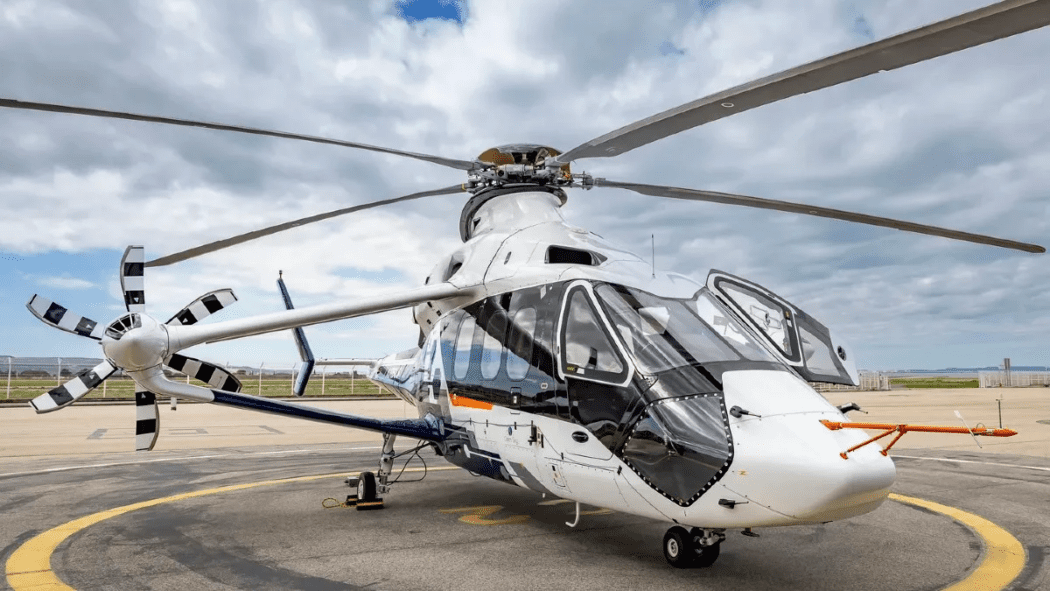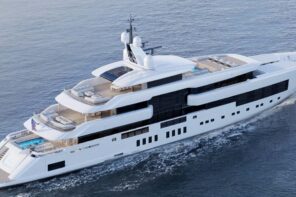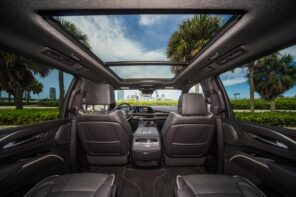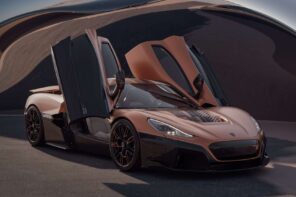The Racer, Airbus’s latest venture into aviation innovation, has just completed its inaugural flight, ushering in a new era for high-speed helicopters with its groundbreaking hybrid design. Initially announced in 2017, this experimental aircraft recently soared to success by hitting key performance and sustainability milestones. It also made a public appearance yesterday in Marseille, France, showcasing its unique capabilities.
Julien Guitton, the head of the Racer program, clarifies the aircraft’s mission: “The aim of the Racer is not to go as fast as possible,” he explains. Instead, the goal is to blend speed with operational efficiency, offering enhanced capabilities at a reasonable cost for missions where rapid response can be crucial. Essentially, the Racer is designed to provide speed where it matters, without the exorbitant costs that often come with it.
The Racer project is part of Europe’s Clean Sky 2 initiative, a collaborative effort that includes Airbus and 40 partner companies across 13 European nations. This ambitious program targets a 20 percent reduction in both fuel consumption and CO2 emissions compared to traditional helicopters of similar weight. Additionally, the design team aimed to significantly cut down on noise and vibration, enhancing passenger comfort and operational stealth.
To meet these goals, the Racer adopts a “compound” design—a sophisticated blend of helicopter and airplane features. This includes a conventional rotor for lift, fixed wings for added aerodynamics, and rear-facing propellers to boost forward thrust. The aircraft also integrates hybrid propulsion, combining the power of traditional engines with an innovative electric system for enhanced efficiency.
Central to the Racer’s efficiency is its engine management system, which optimizes propulsion to balance speed and fuel consumption. This system works in tandem with advanced autopilot technology, ensuring the aircraft’s various components harmonize for peak performance. In rigorous simulations and initial flight tests conducted in April, the Racer met its design’s lofty targets, confirming its potential as a game-changer in aviation.
Compared to a typical helicopter cruising at 130 knots (149.6 mph), the Racer delivers a 20 percent reduction in fuel consumption at 180 knots (207.14 mph). This significant improvement underscores the aircraft’s ability to combine speed with eco-friendly operation.
The Racer’s hybrid-electric system, featuring Safran’s Eco-Mode technology, plays a crucial role in its efficiency. During cruise mode, one of the two Aneto-1X engines can be paused, reducing fuel use without significantly compromising speed. The engine can be reactivated almost instantly if needed, maintaining performance flexibility. This approach can cut fuel usage by up to 20 percent, making the Racer a standout in fuel efficiency.
While the Racer’s top speed of 248.5 mph falls short of its predecessor, the Eurocopter X3’s 293 mph, it still outpaces Airbus’s premier executive helicopter, the ACH160, by about 100 mph. The Racer’s design is a testament to balancing speed with fuel economy and operational cost.
Unlike Boeing’s V-22 Osprey or Leonardo’s AW609, which use tilting rotors and resemble more conventional aircraft, the Racer’s innovative design incorporates fixed wings and rear propellers, optimizing it for both vertical takeoff and efficient forward flight. Many eVTOL (electric vertical takeoff and landing) designs also follow this hybrid approach, combining the best of both worlds for versatile flight capabilities.
The Racer’s wings are equipped with trailing edge flaps, making them adaptable for all phases of flight. These wings take on 40 percent of the rotor’s load, significantly reducing vibration and promising a smoother, more comfortable ride than most helicopters.
In essence, the Racer is not just a high-speed helicopter but a sophisticated blend of engineering excellence and innovative design. It marks a significant step forward in creating aircraft that are not only fast and efficient but also kind to the environment and comfortable for passengers.





